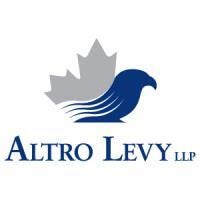It’s that time of year when Canadians wintering south of the border begin to realize that fairly soon they will be packing their things and making the long trip north again. Some of them will do so willingly, eager to get back to friends and family, others will consider extending their stay by another couple of weeks or months, and still others will wonder if there is not some way to make a permanent move south.
The cliché of the Canadian “Snow Bird” exists, because it is a reality. Every winter thousands of Canadians travel south to places like Florida, Arizona, California and Hawaii. The majority retired, they may effectively spend half of their retirement Stateside.
Agreements between the US and Canada make this yearly passage possible. Under US immigration laws, Canadians are generally allowed entry as a visitor in the US for up to 6 months (180 days) at a time when they cross the US border by land, air or sea.
When it comes to taxes, the US Internal Revenue Service (“IRS”) has its own set of rules completely distinct from US immigration law. The US IRS allows Canadians to spend up to 182 days in the US under its “substantial presence” test over the course of 3 years before requiring Canadians to file a non-resident US tax return. Even then, the Canada-US tax treaty provides protections to facilitate this reporting and to keep Canadians on side with both the Canada Revenue Agency (“CRA”) and the IRS (see IRS Form 8833 Treaty Based Return Position Disclosure).
It is important for every Canadian spending time south of the border to make note of these separate, and sometimes conflicting, rules.
For those Canadians wishing to extend their stay in the US, they should look at both of these aforementioned rules to determine if this possibility exists for them. With the US and Canada announcing new initiatives to share information on the entry and exit of people across their shared border, it is possible that overstaying your 6 month entry to the US by even a few days could cause issues with US immigration next time you try to reenter the US. Additionally, for those who wish to avoid the hassle of US income tax filings, special care and attention should be given to the IRS’ “substantial presence” test.
What about those Canadians whose American Dream is not just passing October to April in the US, but rather relocating permanently?
While the US has various visa options available for those looking to work or start a business in the US, it does not have any retiree visa options, unless, perhaps, the applicant is closely related to a US citizen.
Those without a US citizen as a close relative who wish to immigrate to the US without the responsibility of working or starting a company may wish to consider the EB-5 Investor Visa.
The EB-5 Investor Visa was created by the Immigration Act of 1990, and it is a direct pathway to US permanent residency (also known as a US green card). Permanent residency allows you to live and work, or not work, in the US for as long as you would like. It also gives access to potential eligibility for programs such as US Social Security Insurance and Medicare.
To qualify for an EB-5 Investor Visa, the applicant is generally required to invest $1 Million USD in a business entity that creates or preserves at least 10 full-time jobs for US workers within 2 years. In exchange, the investor receives conditional permanent residency for the first two years, and full permanent residency at 2 years once he or she proves fulfillment of the visa requirements. It also allows the spouse and unmarried children under age 21 of the applicant to receive permanent residency.
For those who do not want or are not able to make a $1 Million USD investment, the US government will issue an EB-5 Investor Visa for investments of $500,000 USD in an approved “regional center” project, or if the passive investment is made in either a targeted low employment or rural area. Additionally, those who invest in regional centers receive the added benefit of being able to look to “indirect job creation” to fulfill the 10 full-time US jobs requirement.
Entrepreneurs starting an enterprise in the US may use the EB-5 visa, but it is equally accessible to passive investors looking for a way to make a permanent move to the US, especially when dealing with an approved regional center.


 />i
/>i
